PlayStation 3D: Performance Analysis
E3 Killzone demo and 3D launch titles put through their paces.
If Killzone 3 is the future of 3D, what of the present? Customers of the Sony Bravia 3DTVs get a batch of games for free via PSN (or if you buy a non-Bravia you can pay for the pack). Titles such as the one-track demo of MotorStorm: Pacific Rift and WipEout 3D give us an intriguing insight into the developmental process over the last couple of years, while Housemarque's Super Stardust HD is a showcase demonstration for the technology.
More in-depth analysis would doubtless throw up all manner of interesting data. However, the spanner in the works here is the lack of capture technology for the 3D output of the console. Sony itself uses a collection of expensive devices to transform HDMI 1.4 3D into two 720p streams which are then recombined later on. There are no HDMI 1.4-compatible capture cards out there, so we adapted our own infinitely configurable TrueHD tech to work with it.
So here's how WipEout and Super Stardust HD look in their 3D forms in terms of the raw HDMI output of the console. It's still 60Hz, but two bespoke images are produced with a 30-pixel gap in between (used by the 3DTV for syncing purposes). In short: 1280x1440's worth of data packed into a 1280x1470 framebuffer.
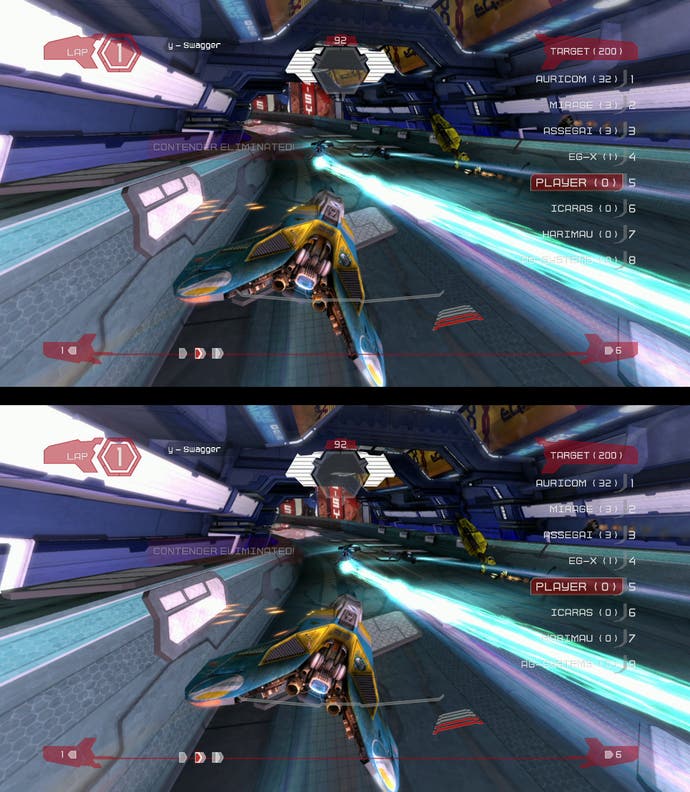
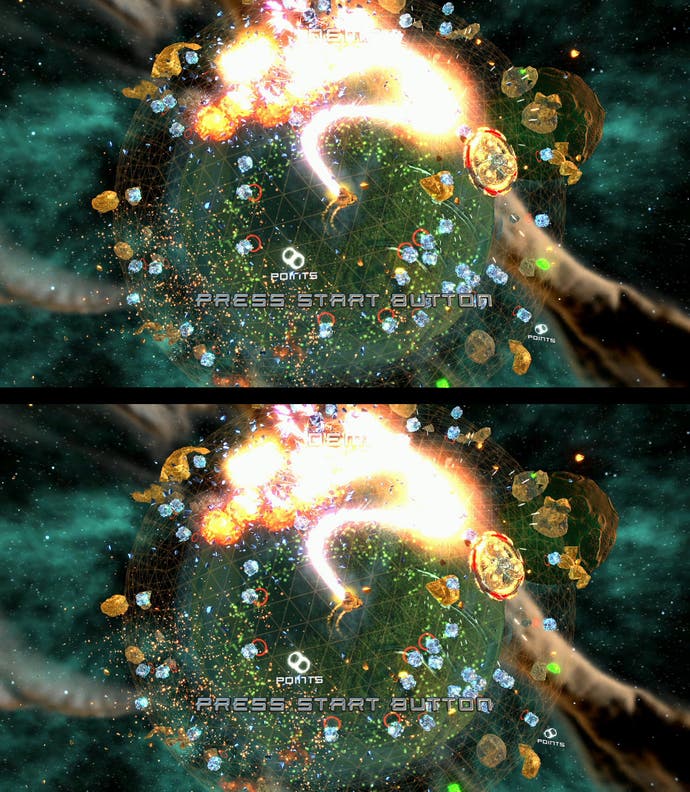
Once we had the image acquisition sorted out, full 24-bit RGB capturing at 60FPS soon followed. Now, with full access to the exact pixel output of the console at our disposal, we could get to work on analysis. So, where to start?
WipEout 3D was first demonstrated at trade shows well over a year ago, well ahead of the CES 2010 outing of the final range of production 3DTVs, so it's as good a place to start as any. Sony has been forthright about the changes it needed to make to the game: 60FPS 2D become 30FPS 3D, but over and above that, has anything else changed? Can the usual DF level of analysis throw up anything of interest?
It certainly looks as though transitioning WipEout from 3D down to 2D was a challenge, but it's important to note that this was one of the first projects the 3D team at SCEE looked at and techniques have progressed as you'll read later. Sony has spoken to us in the past of the need to maintain frame-rate and good anti-aliasing but equally important is the lack of screen-tear.
In the graphs above, what you're seeing is that the left eye only exhibits a near-constant tear at the top of the screen, and when the engine is under stress that tear creeps down. Now, take a look at a couple of direct grabs from the game.
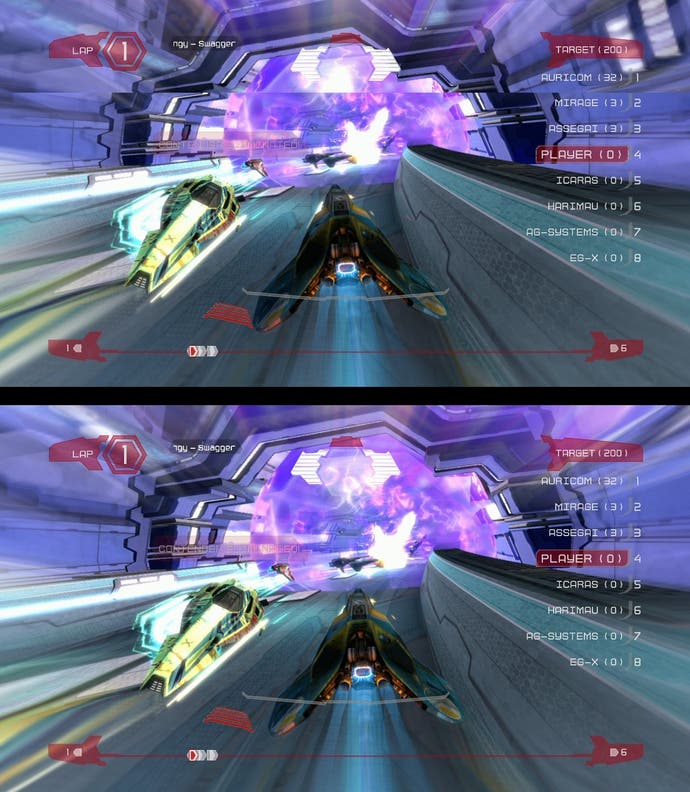
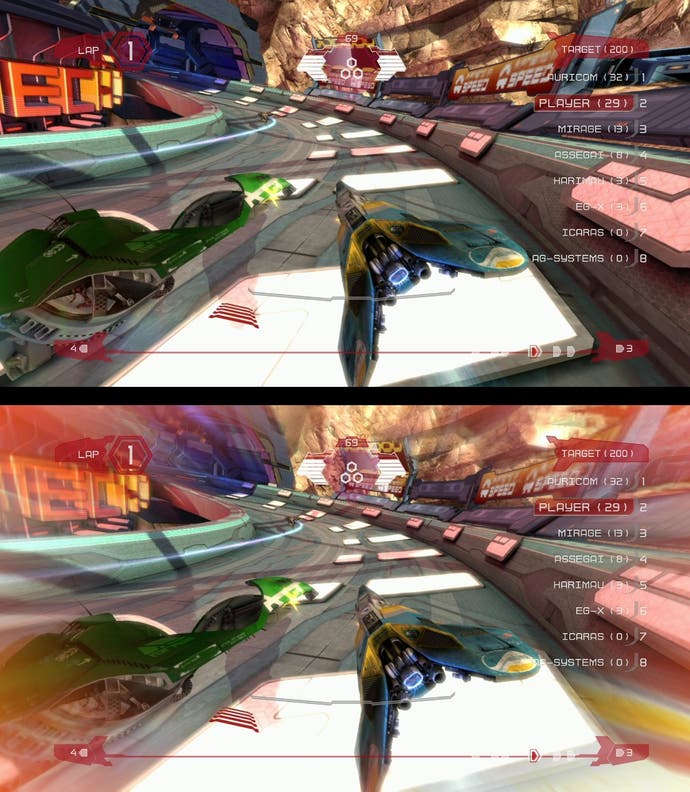
Because of the way the 3D framebuffer is structured, the tear is mostly restricted to the left eye, but in really heavy scenes it will cascade downwards and encroach into the viewpoint of the right eye. The tear is mostly right at the top, so not a huge issue - until the action really kicks off on-screen and the tear creeps lower. On the performance graph you can even see that cascade moving from one eye to the other.
Also interesting is the state of the anti-aliasing. The 2x multisampling AA of the WipEout 720p mode is gone in favour of the edge blur we usually find only in the 1080p mode, again suggesting that the 2D-to-3D conversion process was a real effort.
We also took a look at the MotorStorm: Pacific Rift demo. There's no analysis here owing to our lack of demo code for the debug PS3 (and currently our 3D capture requires the non-encrypted digital output that only the test kit can provide), but what we can tell you is that in addition to the drop to the lower LOD models of the split-screen mode, MotorStorm operates with a dynamic framebuffer, similar to the tech used in the 1080p mode of WipEout HD: horizontal resolution adjusts on the fly according to the complexity of the scene from anything between 640x720 (perhaps even lower on the odd occasion) to the full 1280x720. More cars on-screen or more highly detailed scenery causes the shift downwards, but v-sync is maintained and frame-rate only seems to drop on the crashes - so no impact on the quality of the gameplay itself.
If you're looking for a game that presents a zero-compromise approach to 3D, look no further than Housemarque's Super Stardust HD, still one of the best shooters available on PS3 even three years after its release. The 3D update is nothing short of sensational. We spoke to Housemarque a few months back about their work, but this is what happens when a game is converted across using new 3D-friendly tech that offers a fundamental boost in power. Performance is absolutely identical to the 2D version:
Over and above the 3D boost, Stardust also shows that the optimisation effort required for 3D boosts the 2D game too: the 720p mode gets a boost from 2x MSAA up to full on 4x, while 1080p mode scales up from the old 1280x1080 with horizontal scaling to a new full 1920x1080p image.
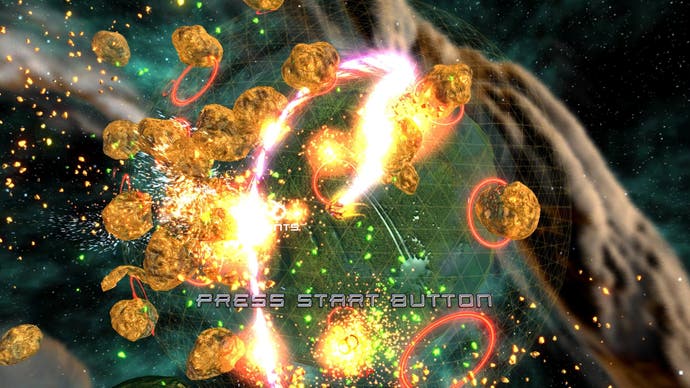
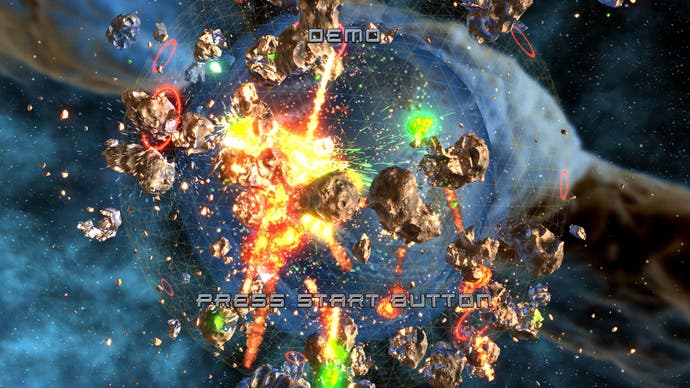
Not every game can be a Stardust but it's clear that it's still early days for 3D performance optimisation. MotorStorm: Apocalypse certainly looked far more impressive than the Pacific Rift demo, Killzone 3 is still in pre-alpha and Gran Turismo 5 looks simply phenomenal - to the naked eye there was no discernible impact on the visuals or frame-rate.
